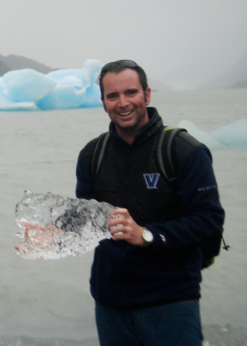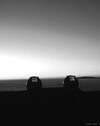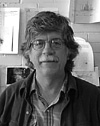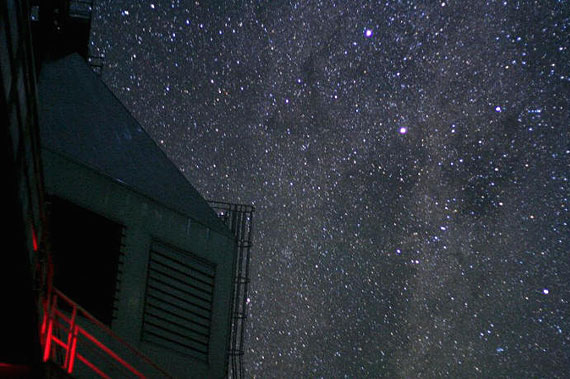|
|
 |
|
| |
 |
|
 |
 |
Team
 |
 |
 |
 |
 |
 |
 |
 |
 |
|
|
|
|
|
|
|
Massachusetts
Institute of Technology |
   |
 |
  |
|
 |
 |
 |
|
 |
 |
|
|
 |
 |
|
 Rob Simcoe Rob Simcoe
Assistant Professor of Physics, Astrophysics Division
Massachusetts Institute of Technology
Contact Information
Email: simcoe [at] space-dot-mit-dot-edu
Phone: (617) 324-0542
FAX: (617) 253-9798
U.S. Mail:
MIT-Kavli Institute for Astrophysics and Space Research
77 Massachusetts Ave., Room 37-673
Massachusetts Institute of Technology
Cambridge, MA 02139
Campus location:
77 Vassar St. (Building #37 on MIT campus map)
Room 673
Other web locations:
Scientific Research
My research concentrates on the chemical link between star-forming galaxies and the intergalactic medium at high redshift (z > 2). Together with Wal Sargent and Michael Rauch, I studied the distribution of heavy element abundances in the IGM at 2 < z < 3, using QSO absorption line spectra taken with Keck/HIRES. In addition we characterized the frequency of high redshift intergalactic OVI absorbers, and in the process discovered a class of shock heated systems with properties suggesting an origin in galactic winds.
While much is known about the chemical composition of the IGM at 2 < z < 4, the constraints become weaker at high redshift because of the obvious observational challenges. At z > 5, CIV absorption is redshifted into the J band, becoming inaccessible to high resolution optical spectrographs and increasingly prone to contamination from atmospheric OH foregrounds. I have been engaged in a pilot program with Gemini/GNIRS to observe several high redshift QSOs for signatures of CIV absorption. Also, in collaboration with Adam Burgasser and Paul Schechter at MIT, and Rebecca Bernstein, Mario Mateo, and Bruce Bigelow at the University of Michigan, I am working to develop an infrared spectrometer for Magellan that is particularly suited for QSO absorption line observations at the highest possible redshifts. This instrument (named FIRE, for the Folded-port InfraRed Echellette) will cover the full 0.8-2.5 micron X/J/H/K bands at 50 km/s resolution in a single exposure, enabling sensitive absorption line measurements with large redshift pathlength in a single observational setup.
While much is known about the chemical composition of the IGM at 2 < z
< 4, the constraints become weaker at high redshift because of
substantial observational challenges. At z > 5, CIV absorption is
redshifted into the J band, becoming inaccessible to high resolution
optical spectrographs and increasingly prone to contamination from
atmospheric OH foregrounds. I have used the Gemini/GNIRS spectrometer
to observe several high redshift QSOs for signatures of CIV
absorption, discovering that heavy elements were present even at the
earliest epochs we can detect. The FIRE spectrograph project is an
outgrowth of this research, and will enable the Magellan telescopes to
obtain more sensitive spectra at higher resolution than has been
previously possible. This will enable studies of stellar byproducts
at extremely low concentrations in the very early universe
For more information on any of these topics, I encourage you to review my publications (listed below) or visit the FIRE project website.
Astronomical Telescopes and Instrumentation
Overview
My early enthusiasm for astronomy was fueled by a passion for telescopes and optics. At both Caltech and MIT, the development of astronomical instrumentation has been an ongoing focus of my research.
During my graduate years, I participated in the construction of the "Large Format Camera" for the 200 inch Hale Telescope at Palomar Observatory. LFC covers the 200 inch prime focus with an array of eight 2048 x 4096 pixel CCDs, creating a 24 arcminute field of view.
Since arriving at MIT, I have increasingly explored infrared
spectroscopy as a tool for studying intergalactic matter in the early
universe. The FIRE instrument fuses this interest developing new
instrumentation with my scientific background in quasar spectroscopy
and high redshift chemical abundances.
For more information on any of these facilities or instruments, please follow the links below.
Scientific Publications
Popular Articles
Refereed Journal Publications (first author)
[search ADS for all publications]
- Observations of Chemically Enriched QSO Absorbers near z ~ 2.3 Galaxies: Galaxy-Formation Feedback Signatures in the IGM (2005) (ADS | astro-ph)
- The Distribution of Metallicity in the Intergalactic Medium at z~2.5: O VI and C IV Absorption in the Spectra of Seven QSOs (2004) (ADS | astro-ph)
- Characterizing the Warm-Hot Intergalactic Medium at High Redshift: A High-Resolution Survey for O VI at z = 2.5 (2002) (ADS | astro-ph)
- Obscuration in the Host Galaxies of Soft X-Ray-selected Seyfert Nuclei (1997) (ADS | astro-ph)
Co-authored Journal Publications
- Discovery of excess O I absorption towards the z = 6.42 QSO SDSS J1148+5251, Becker et al (2005) (ADS | astro-ph)
- Expansion and Collapse in the Cosmic Web, Rauch et al (2005)
(ADS | astro-ph)
- SN 2002cx: The Most Peculiar Known Type Ia Supernova, Li et al (2003)
(ADS | astro-ph)
- Small-Scale Structure at High Redshift. IV. Low-Ionization Gas Intersecting Three Lines of Sight to Q2237+0305, Rauch et al (2002) (ADS | astro-ph)
- The Sloan Digital Sky Survey Photometric Camera, Gunn et al (1998)
(ADS | astro-ph)
- Sizes, Shapes, and Correlations of Lyman Alpha Clouds and Their Evolution in the Lambda CDM Universe, Cen et al (1997) (ADS | astro-ph)
|
|
|
 Adam Burgasser, Ph.D. Adam Burgasser, Ph.D.
Assistant Professor, Kavli Institute for Astrophysics and Space Research
Massachusetts Institute of Technology
Adam Burgasser is an observational astronomer and Assistant Professor at the Kavli Institute for Astrophysics and Space Research, part of the Department of Physics at MIT. His work focuses on the physical properties and processes associated with the lowest mass stars and brown dwarfs. He received his B.S. in Physics from UC San Diego in 1996 and Ph.D. in Physics from Caltech in 2001. He is originally from Buffalo, NY.
Contact Information
Email: ajb [at] mit [dot] edu
Phone: (617) 452-5113
Website: click here
U.S. Mail:
Adam J. Burgasser
Massachusetts Institute of Technology
Kavli Institute for Astrophysics and Space Research
77 Massachusetts Avenue, Building 37-664B
Cambridge, MA 02139, USA
Research
Dr. Burgasser's astrophysical research focuses on the observational study of low-mass stars and brown dwarfs, specifically the properties of L and T dwarfs and Ultracool Subdwarfs. He is particularly interested in characterizing the physical properties of the lowest luminosity stars, magnetic activity, multiplicity, and population statistics. His work incorporates many observational tools, including optical and infrared spectroscopy, high resolution imaging (including traditional and laser guide star adaptive optics), radio astronomy, space-based (HST & Spitzer) imaging, and photometric monitoring.
More information on Dr. Burgasser's research can be found on his research page.
Select Publications
- Clouds, Gravity and Metallicity in Blue L Dwarfs: The Case of 2MASS J11263991-5003550 2008, Astrophys. J., 674, 451-465
Burgasser, AJ; Looper, DL; Kirkpatrick, JD; Cruz, KL; and Swift, BJ
- Binaries and the L Dwarf/T Dwarf Transition
2007, Astrophys. J., 659, 655-674
Burgasser, AJ
- A Method for Determining the Physical Properties of the Coldest Known Brown Dwarfs
2006, Astrophys. J., 639, 1095-1113
Burgasser, AJ; Burrows, A; and Kirkpatrick, JD
- A Unified Near Infrared Spectral Classification Scheme for T Dwarfs
2006, Astrophys. J., 637, 1067-1093
Burgasser, AJ; Geballe, TR; Leggett, SK; Kirkpatrick, JD; and Golimowski, DA
- Quiescent Radio Emission from Southern Late-type M Dwarfs and a Spectacular Radio Flare from the M8 Dwarf DENIS 1048-3956
2005, Astrophys. J., 626, 486-497
Burgasser, AJ; Putman, ME
- The First Substellar Subdwarf? Discovery of a Metal-poor L Dwarf with Halo Kinematics
2003, Astrophys. J., 592, 1186
Burgasser, AJ; Kirkpatrick, JD; Burrows, A; Liebert, J; Reid, IN; Gizis, JE; McGovern, MR; Prato, L; and McLean, IS.
- Discovery of Four Field Methane (T-Type) Dwarfs with the Two Micron All-Sky Survey
1999, Astrophys. J. Letters, 522, L65
Burgasser, AJ; Kirkpatrick, JD; Brown, ME; Reid, IN; Gizis, JE; Dahn, CC; Monet, DG; Beichman, CA; Liebert, J; Cutri, RM; and Skrutskie, MF.
A more extensive bibliography can be found here.
|
|
|
 Paul L. Schechter Paul L. Schechter
William A. M. Burden Professor of Astrophysics
Massachusetts Institute of Technology
Contact Information
Email: schech [at] achernar [dot] mit [dot] edu
Phone: (617) 253-0690
Fax: (617) 253-9798
U.S. Mail:
Paul L. Schechter
Massachusetts Institute of Technology
77 Massachusetts Avenue, Building 37-664G
Cambridge, MA 02139, USA
Related Links:
Research Interests
Professor Schechter is an observational astronomer who studies galaxies and clusters of galaxies and the distribution of dark matter therein. For the last several years, he has been carrying out ground-based optical and Hubble Space Telescope observations of the mirages produced by extragalactic gravitational potentials. Schechter played a major role in the development and implementation of the active optics system for the 6.5-m Magellan Telescopes, located on Cerro Las Campanas in Chile.
Biographical Sketch
Paul Schechter received his undergraduate degree from Cornell in 1968 and his Ph.D. from Caltech in 1975. Before coming to MIT in 1988, he held postdoctoral positions at the Institute for Advanced Study and the University of Arizona, a faculty position at Harvard, and staff positions at Kitt Peak National Observatory and the Carnegie Observatories.
Selected Publications
-
"Quasar Microlensing at High Magnification and the Role of Dark Matter: Enhanced Fluctuations and Suppressed Saddlepoints," Paul L. Schechter and Joachim Wambsganss, submitted to Ap.J.
-
"Microlensing of Relativistic Knots in the Quasar HE1104-1805," P. L. Schechter, A. Udalski, M. Szymanski et al., submitted to Ap.J.
-
"Tales within Tales and Cutoffs within Cutoffs: What Sets the Mass Scale for Galaxies?" Paul L. Schechter, to be published in Lighthouses of the Universe, eds. Sunyaev et al.
-
"H_0 from Gravitational Lenses: Recent Results," Paul L. Schechter, to be published in Proceedings of IAU Symposium 2001, eds. A.N. Lasenby and A. Wilkinson.
|
|
|
 John Bochanski, Ph.D. John Bochanski, Ph.D.
Postdoctoral
Scholar, Astronomy and
Astrophysics Department
Pennsylvania
State University
John Bochanski is an astronomer and
postdoctoral scholar at the Astronomy
Department at Penn State. When John
was at MIT, he worked in the Kavli
Institute for Astrophysics and Space
Research. John's work focuses on
low-mass stars, the most common type
of star and how these stars can be
used to examine the Milky Way. John
received his B.S. in Astronomy from
Villanova University and his Ph.D from the University
of Washington in 2008. John grew up
in Southern New Jersey and is a
die-hard Phillies fan.
Contact Information
Email: jjb29 [at] psu [dot] edu
Phone: (814) 863-0733
Website: click here
U.S. Mail:
John Bochanski
Pennsylvania State University
Astronomy and Astrophysics Department
525 Davey Lab
State College, PA 16803, USA
Research
John's work focuses on two main
topics: the study of intrinsic
properties of low-mass stars, and
their use as probes of the Milky
Way. These dim stars are the most
common type of star, but they are
still poorly understood. John
works on determining the mass,
composition and age distributions of these
stars. Once the fundamental
properties of these stars are
well-known, they can be used to
trace the structure and kinematics
of Milky Way. Since M dwarfs are
so common, they are sensitive
probes of the shape and mass
distribution of the Milky Way.
More information on Dr. Bochanski's research can be found on his research page.
Select Publications
[search ADS for all publications]
- The Luminosity and Mass Functions of Low-mass Stars in the Galactic Disk. II. The Field
2010,
AJ,
139, 2679
Bochanski, J.J., Hawley, S.L., Covey, K.R., West, A.A., Reid, I.N., Golimowski, D.A., Ivezic, Z.
- MASE: A New Data-Reduction Pipeline for the Magellan Echellette Spectrograph
2009,
PASP,
121, 1409
Bochanski, J.J., Hennawi, J.F., Simcoe, R.A., Prochaska, J.X., West, A.A., Burgasser, A.J., Burles, S.M., Bernstein, R.A., Williams, C.L.,Murphy, M.T.
- Exploring the Local Milky Way: M Dwarfs as Tracers of Galactic Populations
2007,
AJ,
134, 2679
Bochanski,
J.J.,
Munn,
J.A.,
Hawley,
S.L.,
West,
A.A.,
Covey,
K.R.,
Schneider,
D.P
- Low-Mass Dwarf Template Spectra from the Sloan Digital Sky Survey
2007,
AJ,
133, 531
Bochanski,
J.J.,
West,
A.A.,
Hawley,
S.L.,
Covey,
K.R.
- Spectroscopic Survey of M Dwarfs within 100 Parsecs of the Sun
2005,
AJ,
130, 1871
Bochanski,
J.J.,
Hawley,
S.L.,
Reid, I.N.,
Covey,
K.R.
West,
A.A.,
Tinney,
C.G., Gizis, J.E.
|
|
|
no website or bio available |
|
|
no website or bio available |
|
|
 |
 |
 |
 |
 |
 |
 |
 |
 |
 |
|
|
|
|
|
|
|
|
   |
 |
  |
University of California,
Santa Cruz |
 |
 |
 |
|
 |
 |
|
|
 |
 |
|
 Rebecca A. Bernstein Rebecca A. Bernstein
Associate Professor, UCO/Lick Observatory
University of California, Dept. of Astronomy and Astrophysics
Contact Information
Email: rab [at] ucolick [dot] org
Phone: (831) 502-7165
Fax: (831) 459-5265
U.S. Mail:
Rebecca A. Bernstein
Associate Professor,
UCO/Lick Observatory
Dept. of Astronomy and Astrophysics
Santa Cruz, CA 95064
Publications
Not available on ADS:
-
"Status of the Giant Magellan Telescope (GMT) Project" Johns, M, Angle, JRP, Shectman, SA, Bernstein, RA, Fabricant, DG, McCarthy, & P, Phillips 2004, Proc SPIE, 5489, 441.
-
"The Mean Flux and Color of Diffuse Intracluster Light in 10 Clusters at 0.03<z<0.3", Krick, J and Bernstein, R, poster presented at "From the First Stars to the Milky Way," Zurich, Switzerland, Aug 2003.
-
"A volume-phase holographic spectrograph for the Magellan Telescopes" Bernstein, G., Athey, A., Bernstein, R., Gunnels, S., Richstone, D., & Shectman, S. 2002, Proc SPIE 4485 453-459.
-
"MIKE: A Double Echelle Spectrograph for the Magellan Telescopes" Bernstein, A., Shectman, S, Gunnels,S., Mochnacki, S, Athey, A, 2002, Proc SPIE 4841, eds. M. Iye and A. Moorwood, p 1694.
-
"A New Method for Measuring the Detailed Chemical Composition of Globular Clusters from High-Resolution, Integrated-Light Spectra" R.A.Bernstein & A. McWilliam, 2002 in IAU Symp #207, Extragalactic Star Clusters, ed. Geisler, Grebel, Minniti.(Berlin: Springer Verlag), 357.
-
"Closing in on the Hydrogen Reionization Edge at z<7.2 with Deep STIS/CCD Parallels" Windhorst, R., Bernstein, R., Collins, N., Plait, P., Woodgate, B., Mather, J., Madau, P., & Shaver, P. 2001, in ESO Astrophysics Symposia, Proceedings of the ESO Workshop on "Deep Fields", Eds. S. Cristiani, A. Renzini, & R. E. Williams, (Berlin: Springer Verlag), p. 357-361.
-
"Galaxy Dynamics from Edge-on Late-type Galaxies" Dalcanton, JJ & Bernstein, RA, 2000, in Dynamics of Galaxies: from the Early Universe to the Present, ASP Conf. Series, Vol. 197, p. 161.
Research
Current Projects in Galaxy Formation and Evolution
- Detailed chemical abundances of extragalactic globular clusters with Andrew McWilliam (Carnegie), Scott Cameron & Janet Colucci (UM).
- Measurements of the flux and color of diffuse intraclutser light with Jessica Krick (UM).
- Dynamics, structure, and star formation processes of disk galaxies with Julianne Dalcanton (UW).
- Detecting the re-ionization edge at high redshift with Windhorst (ASU) et al.
Optical Instrumentation
- In the works: Folded-port near-IR Echellette (FIRE) for Magellan with Rob Simcoe, Adam Burgasser, Paul Schechter (MIT), Mario Mateo (UM).
- DECam, a prime focus camera for the Blanco 4m Telescope at CTIO for the Dark Energy Survey (DES). DES collaborators include Fermilab, U.Illinois, U.Chicago, NOAO, LBL, NCSA, Barcelona.
- Commissioned (Nov 2002): Magellan Inamori Kyocera Echelle (MIKE) with Stephen Shectman (Carnegie Obs.).
- Proposed: Magellan II High Efficiency Spectrograph (M2HES) with Gary Bernstein (UMich) & Stephen Shectman (Carnegie).
Teaching
Courses at UMich (2001–2007)
- Astronomy 102/112: Intro. to Stars, Galaxies, and the Universe
- Astronomy 501: Modern Astronomical Techniques
- Astronomy 160: Intro to Astrophysics
Courses at UCSC (2007– )
Vita
Education & Employment
- Princeton University (Princeton, NJ); AB Physics, 6/1992
- Caltech (Pasadena, CA); Ph.D. Astronomy, 10/1997 (1998)
- Carnegie Observatories (Pasadena, CA); Hubble Fellow, 10/1997-10/2000
- University of Michigan (Ann Arbor, MI); Assistant Professor, Astronomy Dept., 2001-2007
- UC, Santa Cruz (Santa Cruz, CA); Associate Professor, Astronomy Dept., UCO/Lick Obs., 2007
Links
UCO/Lick Directory |
|
|
 |
 |
 |
 |
 |
 |
 |
 |
 |
 |
 |
|
|
|
|
|
|
|
   |
 |
  |
|
 |
 |
 |
University of
Rochester |
|
 |
|
|
 |
 |
|
 Judith L. Pipher Judith L. Pipher
Professor,
Observational & Experimental Astronomy
University of Rochester
Contact Information
Email: jlpipher [at] astro [dot] pas [dot] rochester [dot] edu
Phone: (585) 275-4402
Fax: (585) 273-2813
Office:
Bausch & Lomb 422
Biographical Sketch
Professor Pipher received her B.Sc. from the University of Toronto (1962) and her Ph.D. from Cornell University (1971). She joined the University as Instructor in 1971, and was appointed Assistant Professor of Astronomy in 1972 and Associate Professor in 1977. She was appointed Professor of Astronomy in 1983, where she still serves. She was the Director of the C.E.K. Mees Observatory from 1979 to 1994. She received the Award for Excellence in Undergraduate Teaching, Department of Physics and Astronomy, University of Rochester (2001), and the Susan B. Anthony Lifetime Achievement Award or Contribution to Teaching an Research (2002). She has been Scientific Editor of the Astrophysical Journal since 2002.
Research
Professor Pipher's primary research is in the area of infrared astronomy and infrared detector array development. She, in collaboration with Prof. William J. Forrest, developed over 20 years time ultra-sensitive InSb arrays for the Spitzer Space Telescope infrared array camera, launched in August 2003. More recently, they have developed HgCdTe 10 micron cutoff arrays for use in future space experiments. The group recently was successful in obtaining a NYSTAR grant from the state with ITT and RIT to help ITT for expand their MASCS - modular advanced space-borne camera systems - capability. By the end of the contract, ITT should be extremely competitive in their offerings of infrared MASCS with MEMS spectroscopic capability.
Now that Spitzer is launched, Profs. Pipher, Forrest and Watson are engaged in comprehensive scientific programs concerning early pre-stellar evolution, the initial configurations of young stellar clusters, and a census of all pre-stellar members of a young cluster.
For more information, go to http://astro.pas.rochester.edu.
Links
|
|
|
 William J. Forrest William J. Forrest
Professor of Astronomy and Director of the CEK Mees Observatory
Observational & Experimental Astronomy
University of Rochester
Contact Information
Email: william [dot] forrest [at] rochester [dot] edu
Phone: (585) 275-4343
Fax: (585) 273-2813
Office:
Bausch & Lomb 419
Biographical Sketch
Professor Forrest received his B.S. in Physics from Antioch College (1968) and his Ph.D. from the University of California, San Diego (1974). After research positions at the University of California, San Diego (1974-75) and Cornell University (1975-81), he joined the University as an Assistant Professor of Astronomy in 1981. He was promoted to Associate Professor in 1987 and to Professor in 1999. Prof. Forrest is the Director of the C. E. K. Mees Observatory.
Research
Professor Forrest's primary research interest is in the area of Infrared Astronomy. In particular, he has focused on the nature of dust in and around stars and in the interstellar medium, star formation, and investigations of brown dwarfs. To this end, he is developing advanced infrared array detectors for cameras and spectrometers on ground-based and space observatories.
Links
|
|
|
 |
 |
The Southern sky from Las Campanas, as seen over the dome of the Magellan Baade Telescope.
View is from the Clay Telescope catwalk.
Reflected light from the Milky Way is visible on the Baade dome.
30 sec exposure with Canon Digital Rebel XT, 50mm/F1.8.
(Copyright R. Simcoe). |
|
|
|
|
|
|
 |
